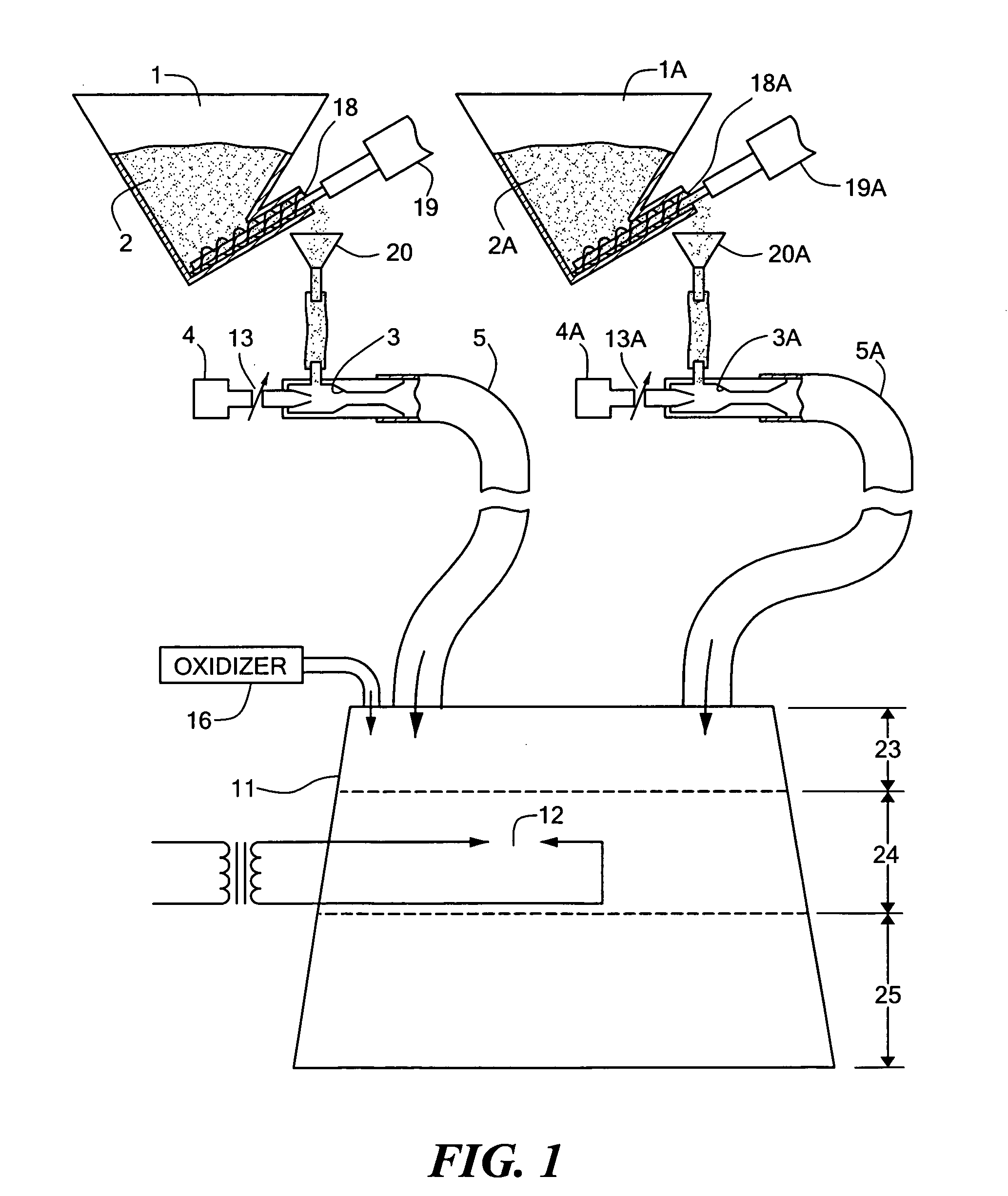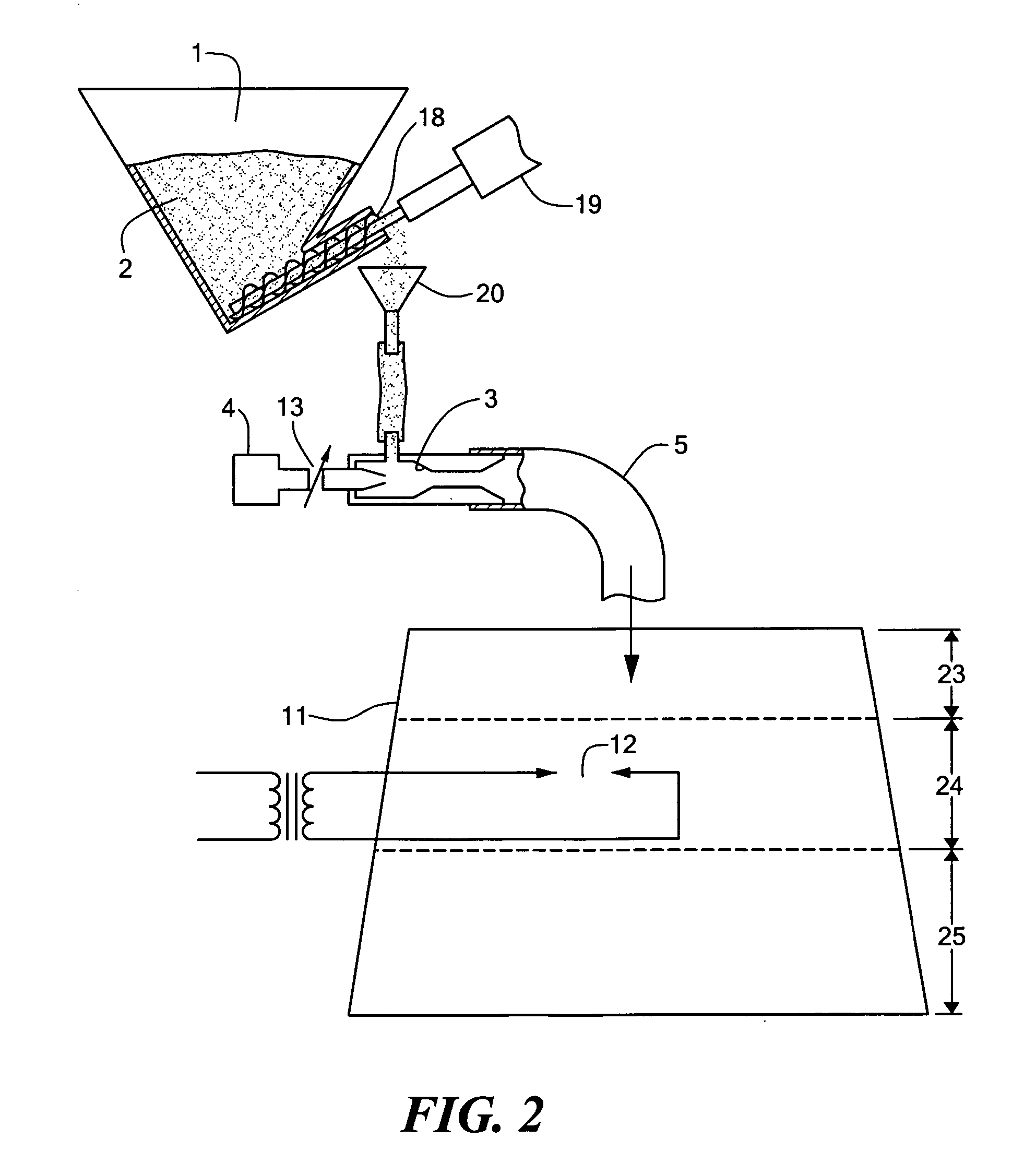Flame spraying process and apparatus
a technology of spraying process and apparatus, applied in the direction of coating, sustainable transportation, plasma technique, etc., can solve the problems of high spray rate, low deposition rate of thermal spraying process, and difficulty in controlling the chemical environment and preventing
- Summary
- Abstract
- Description
- Claims
- Application Information
AI Technical Summary
Benefits of technology
Problems solved by technology
Method used
Image
Examples
Embodiment Construction
[0027] The present patent is very similar to co-pending patent application Ser. No. 10 / 774,199 by the same applicant as herein. However, the co-pending patent application is primarily directed to the process of “painting” lines on highways whereas the present application is more generally applicable to flame spraying high temperature ceramic materials onto any surface without the use of external sources of energy.
[0028] The typical non-combustible materials used in the present application are powdered metal oxides such as titanium dioxide, aluminum oxide, silicon dioxide, chromium oxide, magnesium oxide, iron oxide, zirconium oxide, zinc oxide or a mixture of two or more thereof. All of these materials have melting temperatures above the typical oxygen fuel flame temperature and all of them are non-electrically conducting.
[0029] The source of heat is a powdered metallic fuel which is mixed with the powdered non-combustible materials that are to be flame sprayed. The non-combustibl...
PUM
| Property | Measurement | Unit |
|---|---|---|
| temperatures | aaaaa | aaaaa |
| flame temperature | aaaaa | aaaaa |
| flame temperature | aaaaa | aaaaa |
Abstract
Description
Claims
Application Information
 Login to View More
Login to View More - R&D
- Intellectual Property
- Life Sciences
- Materials
- Tech Scout
- Unparalleled Data Quality
- Higher Quality Content
- 60% Fewer Hallucinations
Browse by: Latest US Patents, China's latest patents, Technical Efficacy Thesaurus, Application Domain, Technology Topic, Popular Technical Reports.
© 2025 PatSnap. All rights reserved.Legal|Privacy policy|Modern Slavery Act Transparency Statement|Sitemap|About US| Contact US: help@patsnap.com



